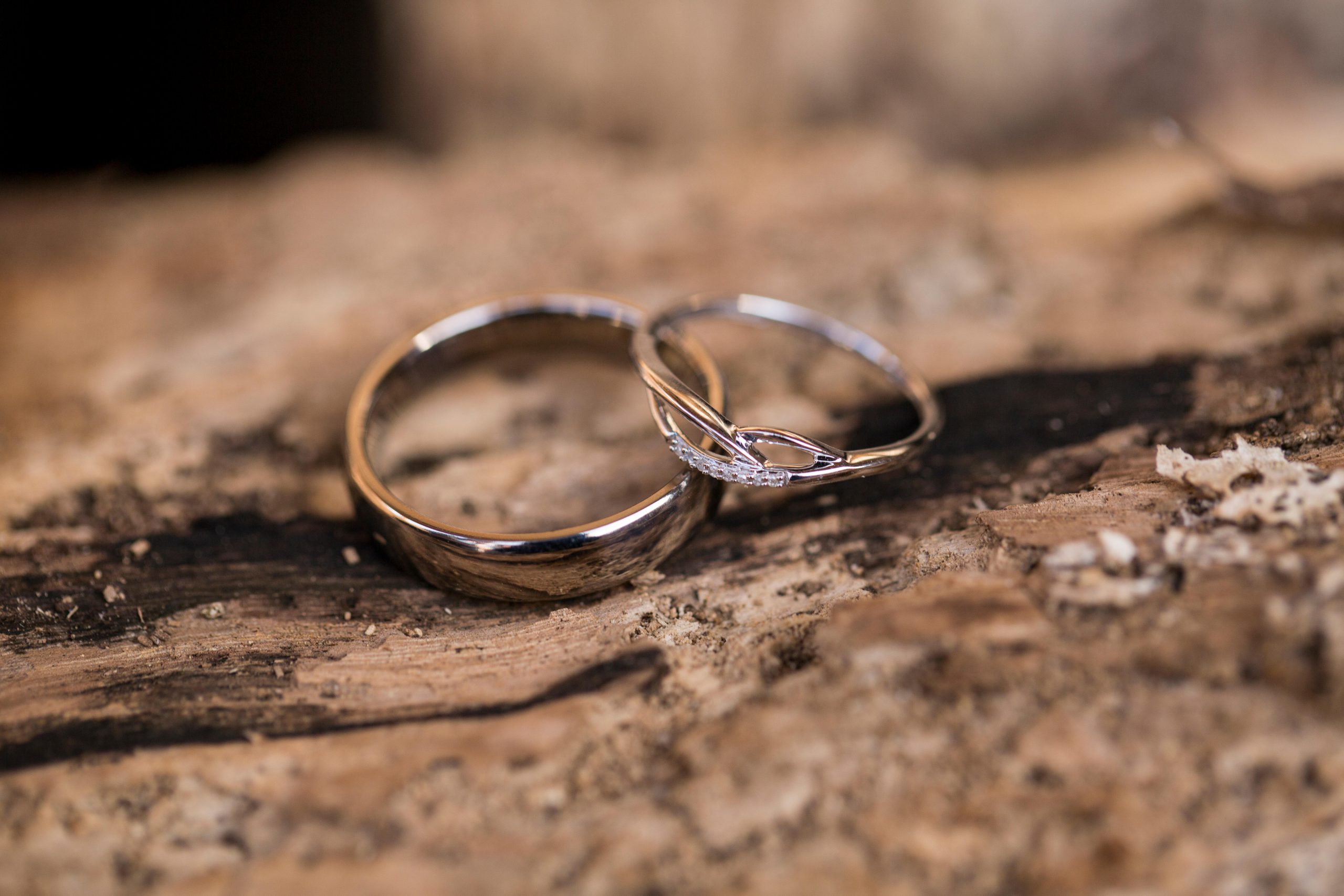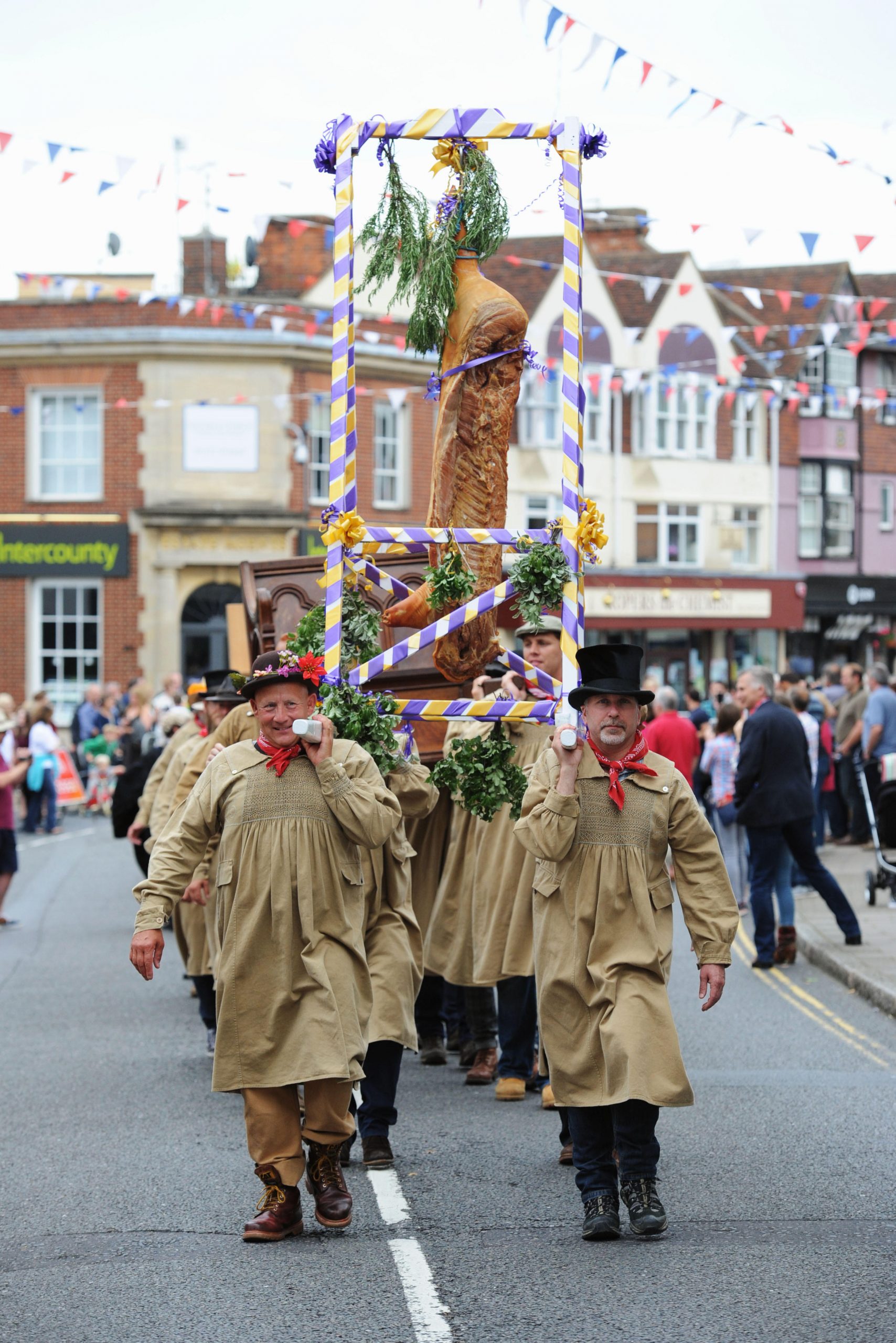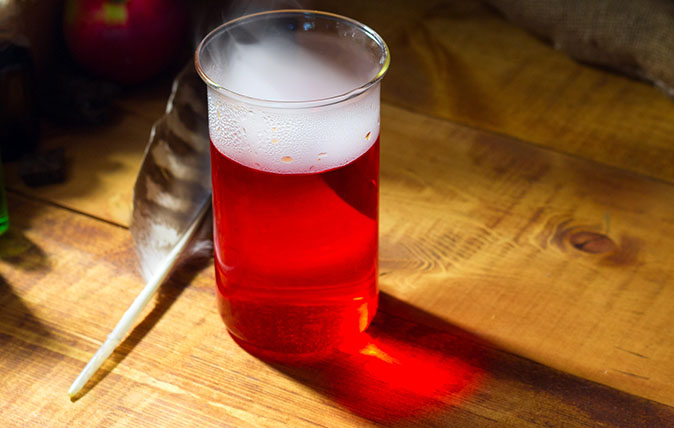Curious Questions: Where do wedding anniversary traditions come from?
Martin Fone discovers the origins of wedding anniversary names and investigates the origins of the Flitch Trial tradition.


A little more than half, 50.4%, of the population aged sixteen or over in England and Wales was married or in civil partnerships in 2019, according to the Office for National Statistics. Although much of the focus is on the big day, with about £14.7bn spent on weddings each year, anniversaries afford an opportunity to reminisce, take stock, look to the future, and celebrate.
Fifty years of marriage is a considerable achievement, even more so when life expectancy was much lower than it is now. From about the 18th century, couples in Germany who reached this milestone were given a wreath made of gold by their friends and renewed their marriage vows. A correspondent of The Belfast Newsletters witnessed such a ceremony and regaled his readers with an account in its edition of October 27, 1852.
‘It was usual’ he wrote, ‘for them to be married again, and this is called the golden wedding…the priest pronounces a simple blessing…the whole ends by a dance and a supper, to which all the friends and relations of the parties are of course invited’. He also noted that ‘there is another custom, too, called the celebration of the ‘silver wedding’ (silberne hochzeit), which takes place after twenty-five years of wedlock; but it is of not such universal observance’.
Taking note of the years of marriage was not a trait exclusive to Germans. The Morning Chronicle in 1825 reported that Mr and Mrs Gerred of New North Road in Exeter had, on January 25th, celebrated their sixtieth wedding anniversary, a rarity worthy of especial note. More mundanely, in Charles Dickens’ Nicholas Nickleby (1838), the Kenwigs celebrated their eighth wedding anniversary by hosting a gathering for their friends and acquaintances, suggesting that ordinary anniversaries, not just major milestones, were marked.
As well as noting the Gerred’s achievement, the correspondent of The Morning Chronicle helpfully tabulated the names of the key wedding anniversaries that prevailed at the time; cotton (first), paper (second), wooden (fifth), woollen (seventh), tin (tenth), silk and fine linen (twelfth), crystal (fifteenth), china (twentieth), pearl (thirtieth), and ruby (fortieth), not forgetting silver and gold for the twenty-fifth and fiftieth respectively.
As for a diamond wedding, ‘contrary to a very general misconception’, the correspondent noted, ‘this requires 75 years of marital companionship’, rather than sixty as it does now. Despite a rearguard battle fought by compilers of anniversary tables throughout the 19th century, the term was used interchangeably to denote either the sixtieth or seventy-fifth anniversary. Its usage by Queen Victoria to denote her sixty years on the throne in 1897 sealed its fate in the public’s consciousness.
The choice of anniversary symbols reflected the development of a marriage, starting with a blank canvas (cloth and paper), before gaining more solidity (wood) and strength and flexibility (tin). Crystal and china reminded the couple of the fragility of their bonds while the radiance and value of long and happy relationship was reflected in silver. Marriages of longer duration were rarer, reflected in the choice of pearl, while the inner flame of a ruby represented the passion that remained after so many years.
Exquisite houses, the beauty of Nature, and how to get the most from your life, straight to your inbox.
By the mid-19th century, the list was extended to include coral (35th), associated with magic and protective powers, for the thirty-fifth, and sapphire (45th), whose deep blue colouring signified profound love. Platinum symbolised the seventieth while oak with its strength and powers of endurance was adopted for the eightieth.
During the twentieth century, the celebration of anniversaries became increasingly commercialised, thanks in no small part to the efforts of the American Retail Jewellers Association, who, lamenting the long wait until the golden and diamond anniversaries, compiled lists of gifts, mostly jewellery of course, appropriate to each of the fifty years of marriage. These were published in 1937 and, with minor regional variations, form the lists we use today.
With a third of marriages ending in divorce, the course of true love never did run smooth. In the Middle Ages, when marriages were practical, commercial, or dynastic arrangements, rather than love matches, wedded bliss would have been a rarity. Ceremonies sprang up around the country where married couples were invited, generally before a sceptical audience, to declare publicly their love and fidelity.
The reward for a couple who could convince the crowd of their sincerity was a flitch of bacon, half a pig cut lengthwise. The most documented ceremony was held in Dunmow in Essex. Supposedly instituted in 1244 by Robert Fitz-Walter, within a century it was sufficiently well known to warrant a mention in both William Langland’s The Vision of Piers Plowman, and Geoffrey Chaucer’s the Prologue to the Wife of Bath’s Tale.

Kneeling on sharp stones in a churchyard, a couple who had been married a year were invited to swear an oath that ‘neither of them in a year and a day, neither sleeping or waking, repented of their marriage’. If they were successful in their claim, the winning couple were paraded around the town, together with their side of bacon and an entourage of musicians. The judges were hard taskmasters, as records held in Little Dunmow Priory show the flitch was awarded only six times. The last of the original prizes was given on June 20, 1751. An artist, David Ogborne, was on hand to make sketches, which he later turned into engravings.
Over the next century, efforts to revive the tradition met with manorial opposition, the Lord of the Manor thwarting John and Susan Gilder’s attempt to hold the ceremony on June 12, 1772, by nailing the Priory’s doors shut. In 1832, Josiah Vine and his wife travelled from Reading to stake their claim, only to be refused entrance by the steward of the manor. The same fate befell a couple from Felstead in 1851, although the residents of Dunmow took pity on them and paid for a flitch of bacon for them.
This story piqued the interest of novelist William Ainsworth, who used it as the basis for his 1854 novel, The Flitch of Bacon. The book’s success led to a revival of the tradition in 1855, the author himself donating two flitches to help things along.
Every four years, on a leap year, the Dunmow Fitch Trials Committee hold the ceremony at Talbert’s Ley Park in Great Dunmow. Couples appear in front of a judge and a jury made up of six single men and six single women and have their case pleaded by two barristers, while two act as devil’s advocates.
Successful couples are carried aloft in tow heavy wooden Flitch Chairs in a procession to the Town Hall, preceded by a ceremonial flitch of bacon bedecked with mock orange blossoms and ribbons. There, the judge passes sentence on them, declaring, ‘for this is the custome of Dunmow well known, Tho’ the pleasure be ours, the bacon is yours’.
The couples, four of whom were successful at the last trials in 2016, in fact receive a voucher to the value of a flitch, while the ceremonial one is eaten by the organising committee the following day. Those who fail to convince judge and jury of the merits of their case walk away with a joint of gammon.
The 2020 Trial, cancelled twice because of Covid restrictions, will finally take place, the organisers hope, on July 9, 2022. I hope a lucky couple bring home the bacon.

Curious Questions: Do love potions actually work?
The idea of a potion that can make someone fall in love is as old as the idea of love
After graduating in Classics from Trinity College Cambridge and a 38 year career in the financial services sector in the City of London, Martin Fone started blogging and writing on a freelance basis as he slipped into retirement. He has developed a fearless passion for investigating the quirks and oddities of life and discovering the answers to questions most of us never even think to ask. A voracious reader, a keen but distinctly amateur gardener, and a gin enthusiast, Martin lives with his wife in Surrey. He has written five books, the latest of which is More Curious Questions.
